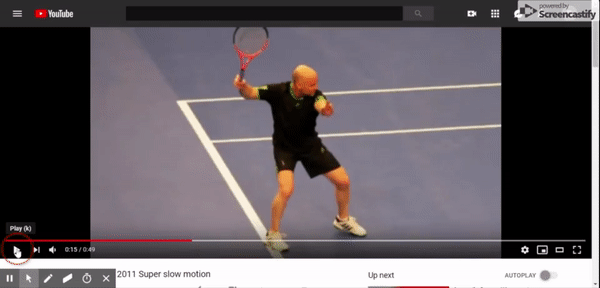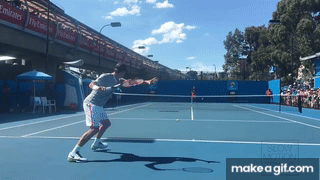Curious
G.O.A.T.
This is one of my recent posts:
''Significant improvement in my consistency and match scores that all my tennis circle keep talking about recently ( just so you know that it’s not a delusion or a fake eurika). And that was about leaving the head still for a moment looking at the contact area, stopping looking at the outgoing ball. Basically what Federer does brilliantly. Now this is not in order to look cool nor to watch the ball like a hawk, it’s only to stop my 5-6kg head from wobbling even a tiny bit screwing up everything as did before. The other excellent not much talked about benefit is it serves like a brake stopping the torso from over rotating, causing the shoulders to stop/slow down very suddenly transferring all the rotational energy beautifully to the swinging arm and racket. ''
And this is a video that I came across today:
''Significant improvement in my consistency and match scores that all my tennis circle keep talking about recently ( just so you know that it’s not a delusion or a fake eurika). And that was about leaving the head still for a moment looking at the contact area, stopping looking at the outgoing ball. Basically what Federer does brilliantly. Now this is not in order to look cool nor to watch the ball like a hawk, it’s only to stop my 5-6kg head from wobbling even a tiny bit screwing up everything as did before. The other excellent not much talked about benefit is it serves like a brake stopping the torso from over rotating, causing the shoulders to stop/slow down very suddenly transferring all the rotational energy beautifully to the swinging arm and racket. ''
And this is a video that I came across today:
Last edited:




